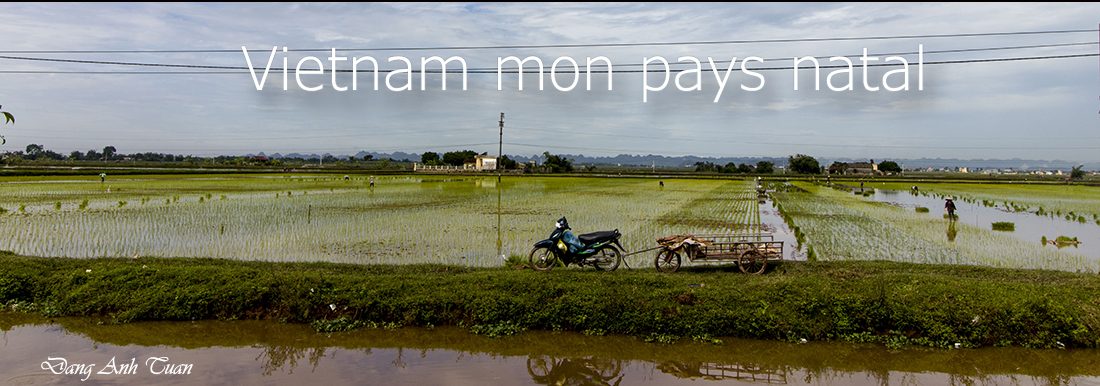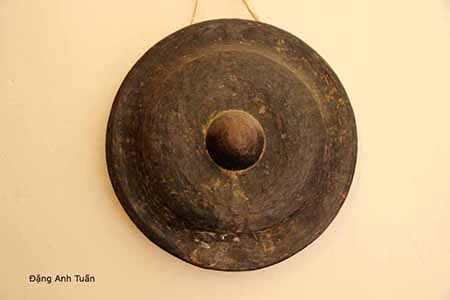Second part.
This general attempted to break down all the stirrings of Vietnamese resistance by melting all bronze drums, symbol of their power in combat. Probably, in this destruction, there was also the Dongsonian gongs because they were in bronze. According to the director of the South Asia prehistory center (Hànội), Nguyễn Việt, the Dongsonian situla cover whose center is slightly swollen and adorned with a star, strangely resembles the gong embossed of the high plateaus. It also owns the handles with which one can use the ropes for wall hanging as a gong. Perhaps it is the predecessor of the highland gongs.
We do not exclude the hypothesis with which the Dongsonian attempted to hide and sell them at any price in the mountainous regions through the cultural and economic exchange with the highland people.
From the linguistic research in particular that of French researcher Michel Ferguson, a specialist of Austroasiatic languages, this suggests that the Viet-Mường were present at the east of the Anamitic cordillera and on banks of Eastern China Sea (Biển Đông) before the beginning of our era. For this researcher, the group Viet-Mường lived together not only with the Tày but also with the highland people (the Khamou, the Bahnar etc … ). because there is the importance of the Tày vocabulary in the Vietnamese language and the similarities of the Giao Chỉ feudal structure with those of current Thai (descendants of proto-Tày).
In addition, there is a borrowing stratum from one or several languages viet-mường in the Khamou vocabulary. According to the suggestion of this researcher, the Tang Ming kingdom could be the former habitat of Việt-Mường group. This confirms the hypothesis the Dongsoniqan could be the provider of gongs to the highland people through the barter because the latter do not manufacture itself these gongs, despite their sanctity.
Probably, this is due to the fact that, being slash-and-burn agriculturalists, they had not a metallurgical industry enabling them to mold these gongs. Up to today, they obtain them from the Kinh (or Vietnamese), Cambodians, Laotians, Thais etc .. before giving them to their musician with his keen hearing. This one manages to give to these gongs a remarkable set of harmonics in accordance with the themes devoted to villagers and tribes by hammering them with the hardwood mallets.
The adjustment of the gong sound is more important than the purchase because it must make the gong in harmony with the gongs of the orchestra and it is necessary to give it a soul, a particular tone. According to the Vietnamese musicologist Bùi Trọng Hiền, the process of collecting and tuning the gongs of different origins and making harmonious and consistent to their aesthetics in a set is a grandiose art. The gong must be sacred before its use by a ritual ceremony, which allow its body to possess now a soul.
Some ethnic groups bless the gongs with the blood in the same manner as jars, drums etc. . This is the case of the Mnong Gar identified for example by the French ethnologist Georges Condominas. The sanctity of gongs cannot leave indifferent the Vietnamese. To give to these gongs a significant scope, the Vietnamese have the habit of saying:
Lệnh ông không bằng cồng bà (The drum of Mister does not resonate less loud to the human ear than the gong of Madam). This also explains that the authority of Mr. is less important than that of Madam.

